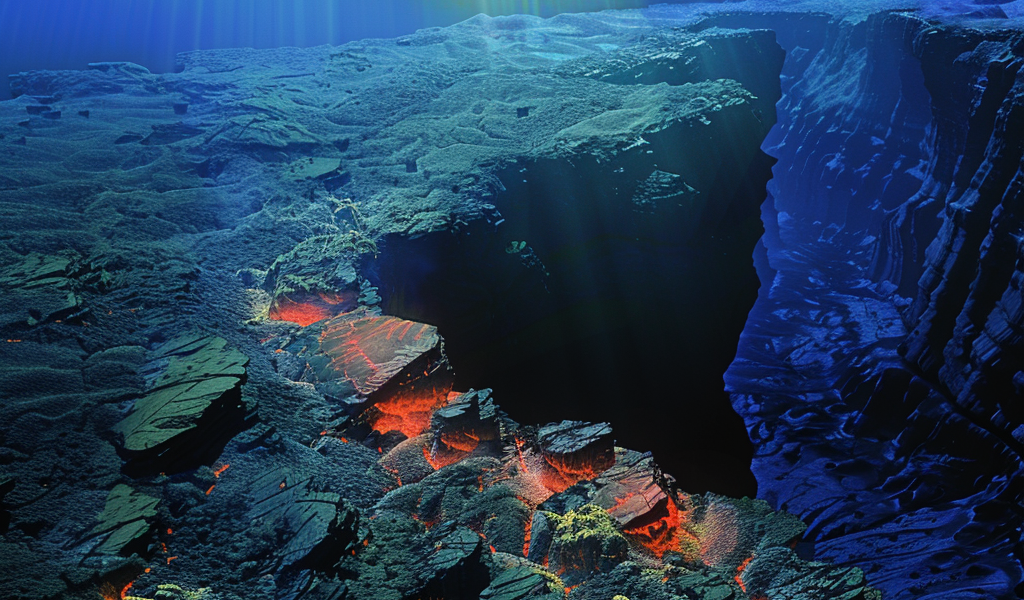A remarkable geological discovery has emerged from the depths of the Pacific Ocean, revealing an ancient slab of seafloor that has been sinking into the Earth’s mantle for over 120 million years. This finding not only sheds light on the geological processes occurring far beneath our feet but also provides insights into the enigmatic behavior of the Earth’s mantle.
The Nazca Plate, positioned to the west of South America’s Pacific coast, is at the center of this discovery. It is bordered by the East Pacific Rise on its western edge and the Nazca subduction zone along its eastern boundary. Researchers have identified a cold, dense slab of rock that is located approximately 410 to 660 kilometers below the Earth’s surface. This slab dates back to a time when the earliest known dinosaurs roamed the planet.
According to a study published in the journal Science Advances, this ancient slab has been in a state of gradual descent, hovering in a mid-dive position within the mantle. The research highlights how this cold downwelling from above is contributing to the fragmentation of a significant mantle blob, a phenomenon that has puzzled scientists for years.
Sanne Cottaar, a professor of global seismology at the University of Cambridge, remarked on the significance of the study, stating, “This study provides a first present-day example of how a cold downwelling from above is breaking up a deep mantle blob.” The blob in question is part of a larger geological structure consisting of two enormous, continent-sized blobs of hot material that rise from the Earth’s liquid outer core into the mantle.
These massive structures, known as large low-shear-velocity provinces (LLSVPs), remain largely invisible to direct observation. Instead, scientists infer their existence through seismic imaging techniques that analyze how seismic waves travel through the Earth. Within these blobs, seismic waves slow down, leading to their classification as LLSVPs.
One of the most studied LLSVPs is the African blob, located beneath the East African Rift Valley. This area is notable for the tectonic activity that is slowly separating the continent, offering a contemporary example of how mantle dynamics can influence surface geology. Cottaar explained, “At the East African rift zone, we have a present-day example of how a large hot upwelling mantle plume that originates at these deep mantle blobs starts to break up a continent.”
Despite the advancements in understanding these geological phenomena, many questions remain unanswered. Scientists are still investigating the origins of the LLSVPs, with some theories suggesting they are remnants from the early collisions that formed the moon. The composition of these blobs and their role in surface activities, such as volcanic eruptions, are also areas of ongoing research.
It is widely believed that these mantle blobs are influenced by the movement of subducted tectonic plates. The interaction between these plates and the blobs may play a critical role in shaping geological events on the Earth’s surface.
As research continues, the discovery of this ancient seafloor slab beneath the Pacific Ocean opens new avenues for understanding the complexities of the Earth’s interior. It highlights the dynamic nature of our planet and the intricate processes that have been unfolding over millions of years.
The implications of this study extend beyond mere geological curiosity; they touch upon fundamental questions about the Earth’s history, its formation, and the ongoing processes that continue to shape our planet today. As scientists delve deeper into the mysteries of the mantle, each discovery adds a piece to the puzzle of Earth’s geological narrative.
In summary, the identification of this ancient slab beneath the Pacific Ocean marks a significant milestone in the field of geology. It not only enhances our understanding of the Earth’s mantle but also provides a tangible link to the planet’s distant past, offering insights into the forces that have shaped its evolution.





